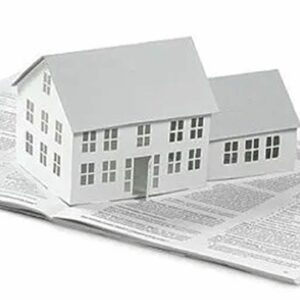IPE hidden deck fasteners ebty/ipe clip?
I’m getting ready to install 1000 sq feet of IPE decking all at a 45 degree angle to the joists. I need to install it with a hidden fastening system. It looks like the Eb-TY and the IPE Clip are the two most used.
– Any pros or cons favoring one over the other? The IPE will be finished to a brown color. The IPE Clip comes in brown and black, while the Eb-TY comes only in black, will the color matter? Your experiences appreciated.
– As for plugs for some of the face screwing that will have to be done, do most people make their own plugs with a plug cutter or do you buy the pre-packaged ones?


















Replies
- Any pros or cons favoring one over the other?
Mike,
I guess you weren't here last week
http://forums.taunton.com/tp-breaktime/messages?msg=44114.1
Jon
Jon,
Those posts are in reference to Deckmaster which is an under the deck fastening system. All work is from under the deck, which is not an option nor would I ever in a million years make it one.
Eb-ty and Ipe-clip are installed on the top of the joists, but thanks for the info anyways.
Mike,
Having worked with the product, I can say Deckmasters could be used from above if you have a 90 degree angle drill/driver, or if the deck is at least a foot off the ground.
They are installed from above to the joists, then the fasteners that go into the decking are installed board by board.
Jon
I've had to repair decks using the eb-ty system, and don't recommend them. I've never installed a deck using them, or the other, for that matter, but the eb-ty system just doesn't have enough rigidity/strength to prevent the boards from cupping up, IMO. I've seen whole boards buckled up, leaving the screws behind.
Maybe someone has had better results, but unless a client insists (and none have,) I won't use them.
My opinion, worth the going rate of .02
Nick, would you say that the repairs you had to make were caused by an improper installed job in the first place? - Cupping is not a randomly occurring phenomena, it is a cause/effect symptom of an improper deck build. Moisture on the back side of any wood will cause it to cup. Was the deck built too close to the ground without a proper vapor barrier installed, or the boards not back stained, or no allowance for a passive ventilation system?
I suspect that if you just cured the symptoms of the problem they will resurface again, but will take a bit longer this time to show up.
The Deckmaster system is notorious for cupping also, if an improper installation is done, too short of screws, deck built too close to ground with no vapor barrier or ventalation.
Good point. The deck had been built with a rain catch/slide beneath it - the deck is about 12 feet up and over a patio. It is speculated that the moisture did not drain completely, though the corrogated panels were well sloped, and there was no standing water, but air might not have been allowed to circulate thoroughly, exacerbating the problem. The couple finally removed the panels, though not before considerable damage had been done by buckled decking. The Ipe boards were splintered. I shot 3" SS screws through the face once I shaved off the edges. Most of the eb-ty screws were bent and biscuits bent.
Maybe if the decking had been face-screwed, it might have faired better. Maybe not. Who knows. Doesn't change my opinion, though.
I never met a tool I didn't like!
LOL! Nick, no offense but your response made my day and gave me a chuckle. You described a failure of a product due to an improper installation to a T, yet you end up faulting the fastening system even after describing a situation where the contractor blew it. I'm not poking fun at you, but that is kind of funny.
"Cupping is not a randomly occurring phenomena, it is a cause/effect symptom of an improper deck build. Moisture on the back side of any wood will cause it to cup. Was the deck built too close to the ground without a proper vapor barrier installed, or the boards not back stained, or no allowance for a passive ventilation system"
next post:
"LOL! Nick, no offense but your response made my day and gave me a chuckle."
Mike,
Lots of reasons for decking to "cup", get over yourself.
Jon
Please explain reasons why you think boards cup other than moisture related issues, I would love to become more informed. What are these lots of reasons?
Thanks.
"Please explain reasons why you think boards cup other than moisture related issues,"
Mike,
I never implied what you just inferred. Decking is most likely to cup as a result of moisture/drying cycles on the exposed (upper)surface, not that moisture from below can't also cause problems. Just that the underside of a deck rarely sees the same humidity cycling the top side does, which is what causes cupping and warping.
Furthermore, the type of material used, AND the grain pattern of the wood, assuming the decking is wood, also play a significant role.
Jon
Jon,
From what I have been told by experts, the information I have read, and from what I have actually witnessed, cupping is caused by the uneven moisture content between one side of a board and another. The fibers contract faster on one side which creates a cup. The wet side is on the opposite side of what we commonly refer as the cupped side.
If you install a IPE deck with wet lumber and it cups in the first two weeks, this is because the wood was too wet and it dried unevenly. If a deck is cupping over a long time such as a year or longer this is due to moisture being introduced to the wood from the bottom. There are warnings all over the place about building a deck close to the ground. You must do things differently, such as putting down a plastic vapor barrier, cutting vents into the rims, back staining the decking (which acts as a waterproof barrier to keep the water out of the boards underside).
The bull headed solution that a lot of old timers seem to fall back on is just to try to fight the problem with over fastening the decking to overcome the forces created by the underlaying problem. Putting in more nails or screws in the decking and dismissing hidden fastening because it can't overcome a problem it wasn't designed to deal with, which is an improperly built deck.
I just see wood reacting predictably and consistantly, under the same laws of physics that effect other materials, I don't look at wood as being governed by voodoo or some strange magic forces that you never know what it is going to do. That voodoo is introduced by us, the wood reacts the same, we usually are doing something incorrect if it reacts unexpectantly.
...not to mention that direct sunshine and can only hit the top of any deck (which has to cause unbalanced drying cyles).
"I just see wood reacting predictably and consistently, under the same laws of physics that effect other materials..."
Mike,
And that is the mistake you are making. Wood is wood, not steel or plastic. It is often highly susceptible to lopsided humidity and temperature cycling.
You are absolutely correct that trying to fasten the heck out of it won't work, but at the same time, there are more factors at work than you allude to.
Jon
Eb-Ty can be laborious, it can slow installation down over what you might be used to. Once you get in a groove, things can move along...but the starting process can be slow.
I'd advocate Eb-Ty and other similar systems on 1x4 boards, but not on anything larger. For 2-by, or for 1x6, I'd recommend face screwing and plugging.
Buy the plugs. You can make your own if your time isn't worth much and you don't mind dulling a few plug cutters.